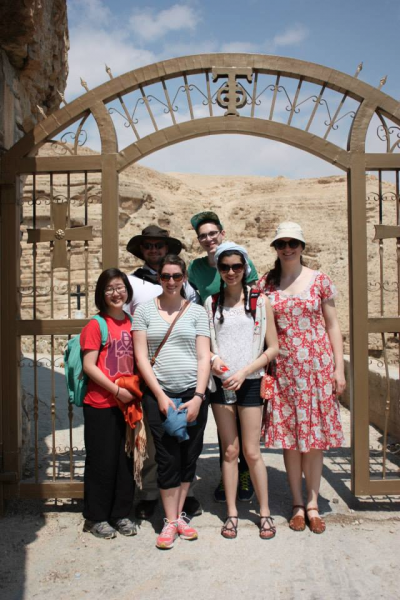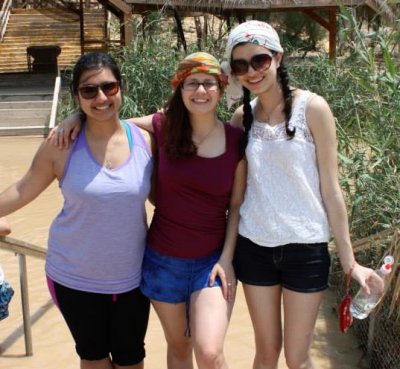St. George Monastery and the Inn of the Good Samaritan
It took less than ten minutes once we had left Jerusalem for the scenery to change from the rich foliage to the unplanted desert. We had crossed over to the West Bank to begin our day in the Judean desert and take the winding path down to the St. George Monastery. Once our group stepped off the bus, we were almost bombarded by the Bedouins who live around this area, trying to sell us trinkets and headscarves (as we left they also had delicious freshly squeezed juice). We were also pleaded with to buy a donkey ride, or “taxi” as they kept referring to it—I’ve never been around more persistent people in my life.
The Greek Orthodox monasteries thrived in the Byzantine period where monks were seeking the desert experiences of the prophets and isolated themselves in these caves. The St. George monastery is one of the few that is still in use, clinging almost precariously to the wall of the canyon. The monks are easily identifiable wearing all black, and the monastery was beautiful in itself, with its ancient mosaic floors and painted walls. This site was full of pilgrims, and what I found most interesting (and quite disturbing) was the tomb of a Romanian monk who has been dead for sixty years but his body is extremely well preserved, which you can see through the glass.
Later in the day, we visited the Inn of the Good Samaritan, which is a parable told by Jesus. It becomes a large hub for pilgrims to visit for this reason, though it predates the New Testament, providing protection for travellers. Recently, a museum has been built on this site containing numerous mosaic floors and walls from the ancient synagogues and other buildings in the surrounding area. The museum also shows the modern Samaritan community, which has very similar rituals than it did thousands of years previously.
Natalia Pochtaruk.

